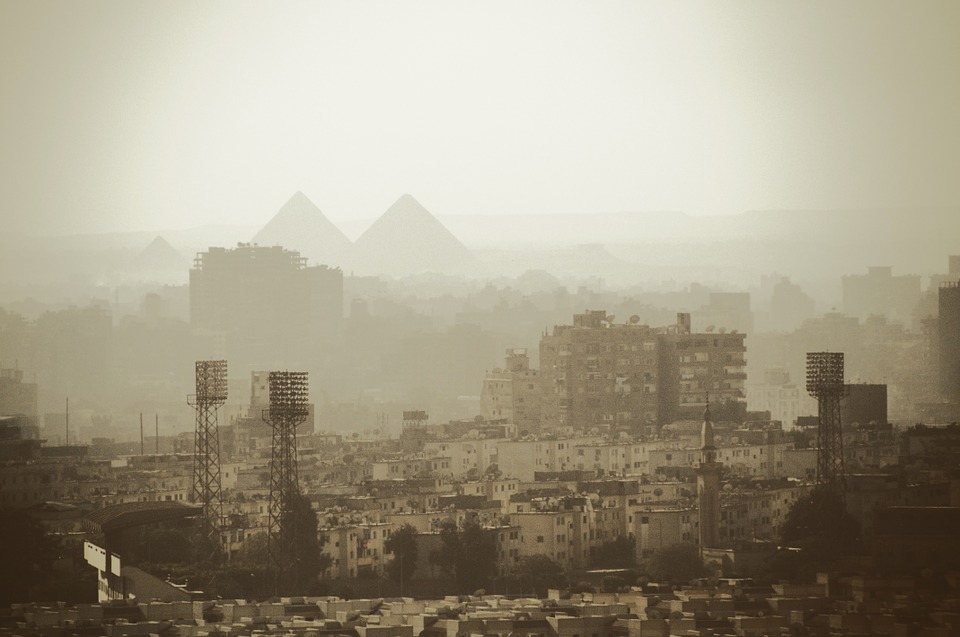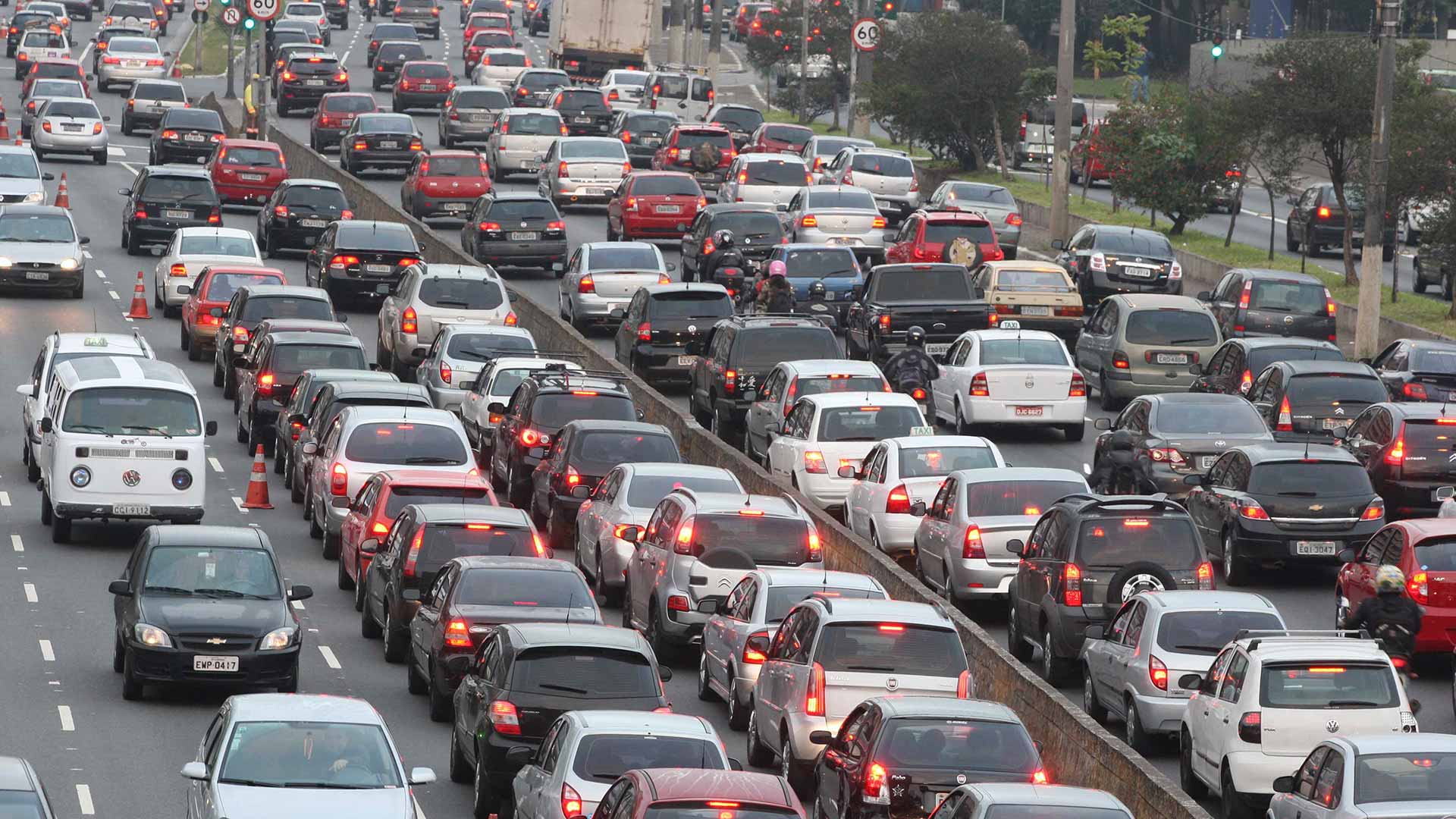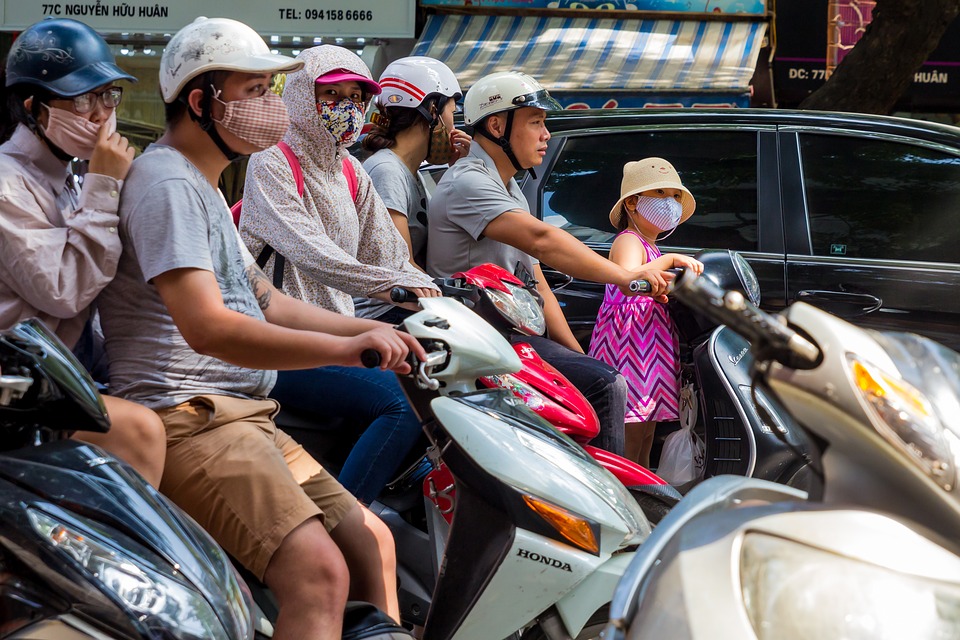Air pollution represents a major environmental risk to health. The World Health Organization (WHO) estimated in 2016 to 4.2 million the number of premature deaths caused worldwide by air pollution.
People living in low- and middle-income areas generally pay a higher price. In fact, 91% of the deaths occurred in the South-East Asia and Western Pacific regions.
In Europe, a significant proportion of the population, especially in cities, live in areas where air quality standards are exceeded.
Most sources of air pollution are beyond our control and therefore require concerted action and investment in greener transport. But also planning, power generation and industry.

Causes of air pollution
Road transport is one of the main sources of air pollution in Europe, particularly with regard to harmful pollutants such as nitrogen dioxide and fine particles. Emissions from agriculture, energy production and energy consumption by industry and households also contribute to air pollution.
However the division of responsibilities in air pollution between the industrial sector and land transport is clearly imbalanced towards transport. In Spain, for example, almost 80% of air pollution is due to road traffic.
The main causes of air pollution are related to the ignition of fossil fuels (coal, oil and gas).
Yet the road is now the main means of transport and continues to gain ground against the railway.
Private cars consume half of the energy resources, conversely the public transport only 3%. Despite this, the average index of occupancy of private vehicles is 1.2 people per car. In the city, half of the trips made by car are for distances of less than 3 kilometers.
Travelers and goods, also transport mainly by road: on average 70% of the total transport in the EU countries. This proves that the train has gradually lost importance, to represent today only 4.2% of the traffic. However, this trend is being reversed because of flygskam and the fact that more and more people are trying to avoid flying.
The consequences of air pollution on health
Air pollution is responsible for around 500,000 premature deaths each year in Europe. There is a strong link between exposure to high concentrations of fine particulate matter (PM10 and PM2.5) and growth in the mortality rate. Suspended particulates such as nitrogen dioxide (NO2) and ground-level ozone (O3) are the most harmful to human health and have an important role in cardiovascular disease and death.
Acute or chronic bronchitis
Air pollutants weaken the bronchi, making them more susceptible to viruses and bacteria. It is estimated that 950,000 cases of acute bronchitis are caused by air pollution, and similarly cause 134,000 new cases of chronic bronchitis. Chronic bronchitis can degenerate into chronic obstructive pulmonary disease. The latter is permanent and not reversible. 10% to 15% of COPD cases are related to air pollution.
Asthma attacks
Asthma is the main condition triggered or aggravated by air pollution. It is estimated that 10% to 35% of asthma cases identified each year are related to air pollution.
Cardiovascular illnesses
Suspended particles can trigger strokes, myocardial infarction, or angina pectoris.
Pollen allergies
The fine particles in the air help pollen grains more easily release the proteins responsible for allergies. Thus allowing them to reach the airways, and therefore cause allergic crises.
Lung and Respiratory Airways Cancers
It is difficult to estimate accurately the number of cancers related to pollution. The causes of cancer are difficult to identify. However, experts believe that pollution is a factor that can cause this disease. That's why experts at the International Agency for Research on Cancer (IARC) have assessed the link between air pollution and the risk of cancer. They concluded that air pollution is carcinogenic to humans
Reproductive System Disorders
Air pollution is also implicated in the decline of male fertility, premature births or even intrauterine mortality.

The consequences of air pollution on the environment
As expected, air pollutants also have a detrimental effect on crops and ecosystems. By preventing photosynthesis, in many cases, air pollution has a major impact on the process of plant evolution. So serious consequences on the purification of the air we breathe.
The accumulation of gases in the atmosphere also creates environmental problems with consequences that are sadly known to us:
- Global warming,
- Decrease of the ozone layer,
- Acid rain,
- Greenhouse effect…
These phenomena are due to the properties of certain gases (carbon dioxide, methane, nitrous oxide, ozone and chlorofluorocarbons) capable of trapping the heat of the sun in the atmosphere, thus preventing it from returning to space after having been reflected by the Earth.
Fine particles, definition :
Fine particles are a class of particles suspended in the ambient air.
They are generally classified according to their diameter: PM 10 (diameter between 2.5 and 10 μm) and PM 2.5 (particles with a diameter less than 2.5 μm). These are the most dangerous. Within this category known as PM 2.5, there are furthermore PM 1 with a diameter of less than 1 micron, referred to as ultrafine particles.
Unlike larger diameter dust, fine particles are too small to drop to the ground simply by gravity.
These suspended particles consist of a mixture of organic and mineral substances. Their main components are sulphates, nitrates, ammonium, sodium chloride, carbon, minerals and water.
They penetrate deep into the airways, and thus carry with them allergens, heavy metals and other hydrocarbons. And the finer they are, the further they go in the body.
Values recommended by WHO:
PM2.5
10 μg / m3 annual average
25 μg / m3 average over 24 hours
PM10
20 μg / m3 annual average
50 μg / m3 average over 24 hours

Fine particles, how to protect ourselves ?
Fine particles pass everywhere, so there is no way of 100% effective protection.
However, it is advisable, in case of peak pollution, to avoid the intense physical activities both outside and inside.
Avoid rides at rush hour and around major highways.
It is better to continue airing as this helps to reduce indoor air pollution. Closing windows is useless.
Paper masks are inefficient. The only filter masks showing (relative) efficiency are some anti-pollution masks.
In case of respiratory or cardiac discomfort (shortness of breath, wheezing, palpitations), take advice from your pharmacist or consult your doctor. Choose shorter outings that require less effort.
